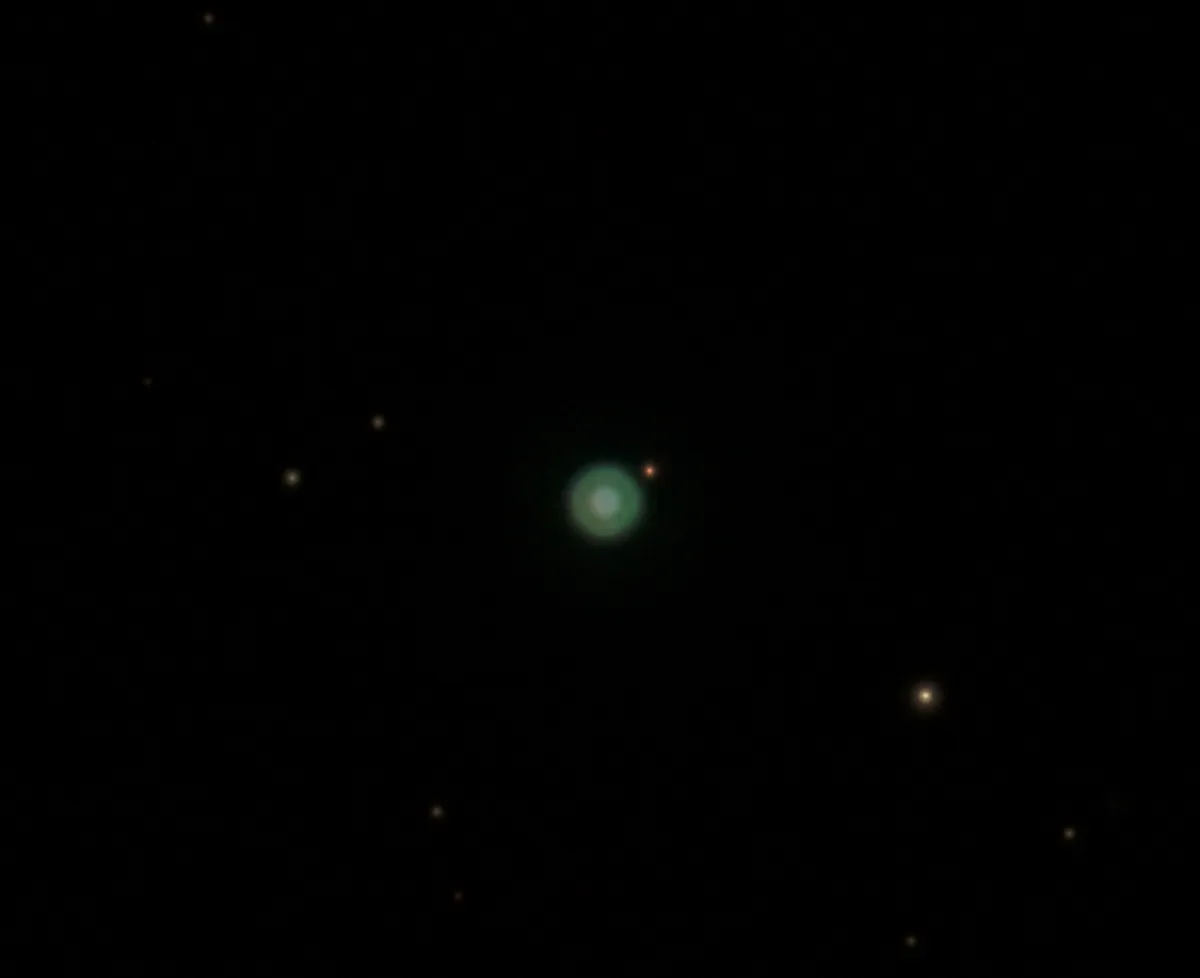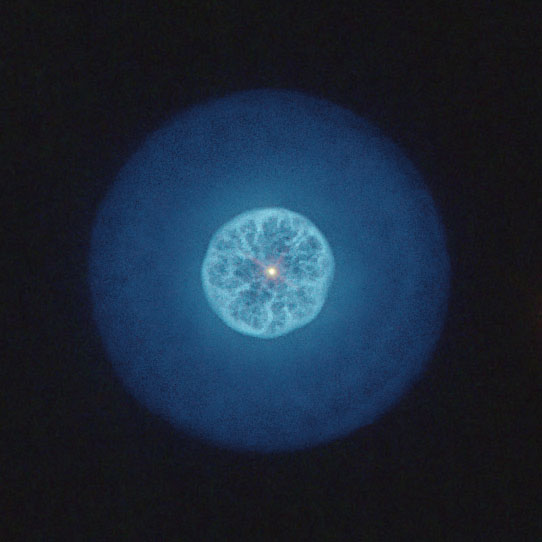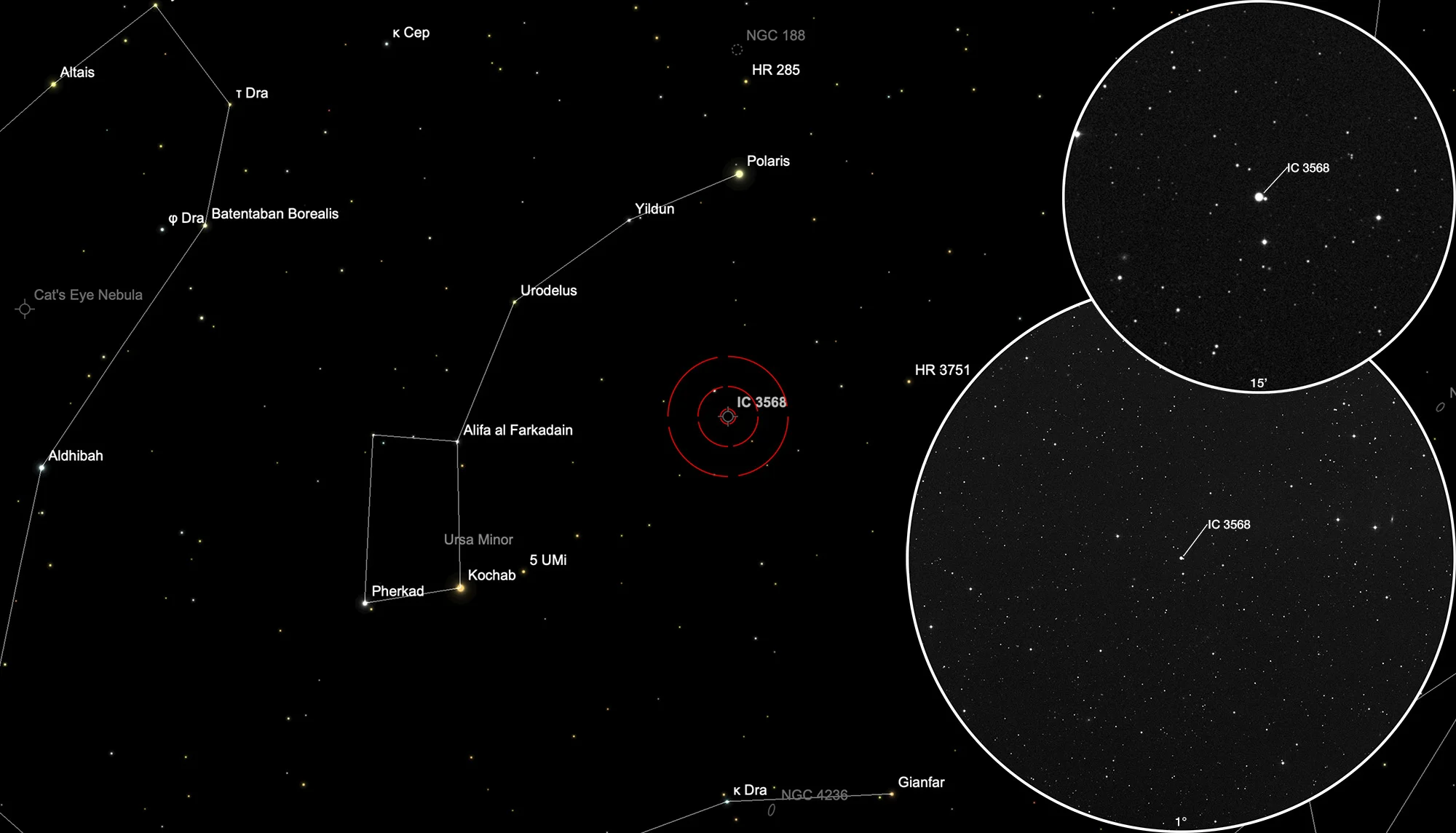Lemon Slice Nebula (IC 3568)


History
This planetary nebula was discovered on 31 August 1900 by the American astronomer Robert Grant Aitken with the 12" Clark-Refractor at Lick Observatory. He was looking at Comet Borrelly-Brooks and noticed that the star BD +83° 357 was surrounded by a small circular nebula. This was confirmed with the 36" Refractor the next night. [277]
IC 3568 was misclassified as a compact galaxy UGC 7731 in the «Uppsala General Catalogue», published in 1973. [459] It also appeared 1989 as PGC 41662 in the «Catalogue of Principal Galaxies». [144]
The PN probably received its nickname «Lemon Slice Nebula» in 1997 due to a publishing of an image [537] taken with the Hubble Space Telescope where it was rendered yellow and looked like a slice of lemon.
Physical Properties
Simbad lists the following magnitudes measured in different spectral bands: B 11.809, V 10.73, g 10.791, R 12.651, r 11.782, i 12.387, J 11.368, H 11.398, K 10.844. Distances are given ranging from 2265 pc to pc. [145]
| Designations | PN G123.6+34.5: IC 3568, PK 123+34.1, ARO 56, VV 63, VV' 111 |
| Right Ascension (J2000.0) | 12h 33m 07s |
| Declination (J2000.0) | +82° 33' 50" |
| Dimensions | 10." (optical) |
| Distance | 1.31 kpc |
| Radial Velocity | -41.1 ± 0.8 km/s |
| Expansion Velocity | 7.8 (O-III) km/s |
| C-Star Designations | AG +82 365, AG82 147, BD +83 357, GCRV 7565, HD 109540 |
| C-Star Magnitude | B: 13.73, V: 13.45 |
| C-Star Spectral Type | O3(H) |
| Discoverer | AITKEN 1900 |
Finder Chart
The planetary nebula IC 3568 is located within the IAU boundary of the inconspicuous constellation Camelopardalis, but it lies closer to the more conspicuous constellation Ursa Minor, roughly between Polaris and the box of the Little Dipper. The PN is thus easily observable all year round.
Visual Observation
400 mm Aperture: In the 21 mm Ethos eyepiece, the PN appears as a fairly bright, slightly blurry star. Since the PN is located near the celestial pole, on a Dobsonian high magnifications can be easily selected without the object running out of the field of view. The 6 mm radian (300x) shows a diffuse edge with a brighter inner area. There is a small star immediately next to the PN. — 400 mm f/4.5 Taurus Dobsonian, Hasliberg, SQM 21.0, 3. 2. 2024, Bernd Nies
